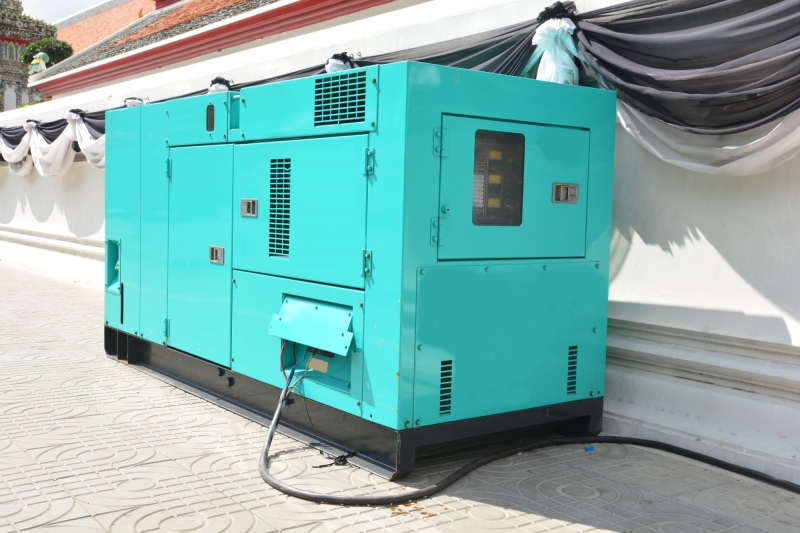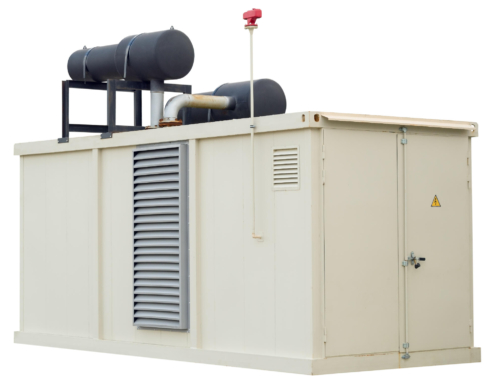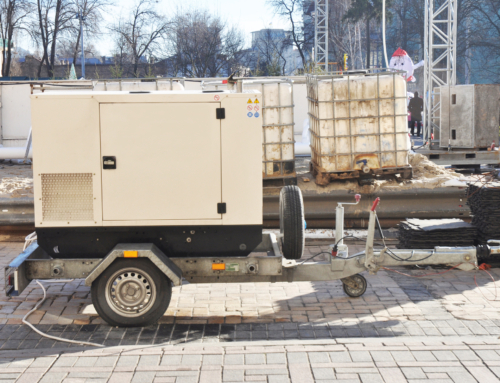Has your worst fear been realized? The clicking sound from a diesel standby generator can be deafening. Especially in a situation where it’s your only hope for power.
First things first, you have to breathe and collect yourself. This will help you think clearly about what the problem might be. It will also assist in coming up with solutions so that you can get the diesel generator up and running again quickly.
So, where do you start? How are you going to work out what’s wrong with your diesel power generator? If you have no idea where to begin, use this guide to help you get the power back on.
Table of Contents
Check the Batteries
Perhaps the most common reason why a new or used diesel standby generator fails to start is because of battery failure. If you’ve been performing regular checks, you should know whether the battery has a full charge.
You should also double-check all of the connections and cables to make sure they’re in good condition and don’t need replacing. If you’ve got any spare ones lying about, you can use these to test before purchasing a new battery.
The Diesel Standby Generator Is Leaking
Leaky generators are a sure sign that something is wrong. The most common type of leak is due to the block heater hose failing and causing coolant to spill. They often wear out quickly due to the temperature from a block heater.
Regular maintenance checks and cleaning can catch leaks before they become an issue when you need to use your generator. Ensure you look over all of the hoses and investigate for blockages to prevent any liquids from appearing where they shouldn’t.
The Generator Is Out of Fuel
This one is embarrassing. If your diesel standby generator has no fuel, then it’s not going to start. It’s as simple as that.
However, you should ensure that your gauges are working correctly. Sometimes they can get stuck and give you a false reading of how much fuel is in the tank. Checking it manually will help you keep an eye on your gauge and levels as well as save you from any sort of embarrassment from coworkers.
It’s Got Too Much Fuel
If you do need to restock your fuel, it’s important to ensure that you don’t overfill. Normally there are alarms to prevent this from occurring, but if it happens to reach its capacity, then this can stop the generator from kicking over.
There have also been occasions when the alarm can go off on its own. If the generator is running hot, then the fuel will start to expand and overflow. You’ll need to wait for it to cool down so the levels return to normal so your generator can start.
Is Generator Running Hot?
Before the generator kicks in, you should ensure it has enough coolant. If not, you’ll find that it will start to overheat and either break or shut down. They can cause damage to parts within the diesel generator.
If you notice that the levels are decreasing rapidly, then you’ve got a leak somewhere and need to address that before you turn the generator back on. If there’s no leaking, then it could be a blockage or cracked head. This feeds water into the cylinders and oil pan, which can cause severe damage to the machine.
The Generator Is Too Cold
Starting a cold generator is like starting a car in the winter. It can take up precious time that you don’t have while you attempt to get it running.
If you want to save time and unwanted frustration, then installing a block heater can help get the generator started faster. It also helps avoid any deterioration of the starter parts and engine components that get overused while you try to kick it over.
Wet Stacking
If you notice a thick, dark substance leaking from the diesel generator’s exhaust pipes, then it’s likely wet stacking is occurring. On these occasions, there is excess fuel getting delivered to the cylinders. This makes it difficult to use any of the gas efficiently.
Preventing generators from wet stacking starts at the design level of your facilities. The most important and least expensive is installing a temperature monitoring system. This will track and record the exhaust temperatures to ensure they remain under control.
Another alternative is to use smaller generators in parallel with one another. This increases the reliability and flexibility of the company’s operations. Using smaller diesel generators can sometimes be more efficient as they aren’t required to be running all of the time, and you don’t need as much power to utilize them.
Before installing a generator, speak to a professional who can assist with the design principles to avoid a wet stacking incident from occurring. This will help stop any unnecessary damage to the generator and ensure that it’s working when you need it to.
Is It Time for a New Generator?
Diesel generator troubleshooting shouldn’t lead to tearing your hair out. If you discover any of these issues, then it’s possible to get it back up and running in a reasonably short period of time. However, if these tactics fail, then it might be time to look to upgrade your diesel standby generator.
We offer a wide selection of high-quality diesel generators that you can rely on when you need it. We might even buy your old one and take it off your hands. Contact us today, and we’ll help you find the right generator for your company.





![How to Calculate the Efficiency of a Diesel Generator [With Formula]](https://swiftequipment.com/wp-content/uploads/2023/04/diesel-generator-500x383.jpeg)

Leave A Comment